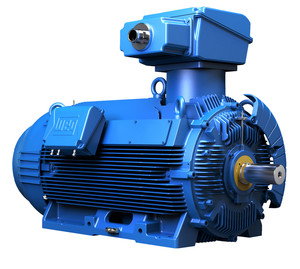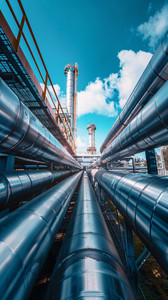
 |
Charlotte Stonestreet
Managing Editor |
| Home> | DRIVES & MOTORS | >Electric Motors | >Safely advancing hydrogen technologies |
Editor's Pick
Safely advancing hydrogen technologies
16 April 2025
As industries face the urgent need to embrace hydrogen, challenges such as flammability and material embrittlement need to be addessed. João Cardante reports

HYDROGEN'S ROLE in decarbonising industries is vital, but its safe utilisation cannot be overlooked. A 2023 report from Process Safety and Environmental Protection highlights that, while hydrogen offers a carbon-free alternative, its hazards — including flammability and embrittlement — demand a heightened focus on safety. "Hydrogen has unique physical and chemical characteristics," states the report. “These properties also raise serious concerns about the safety of hydrogen in utilisation and storage."
Firstly, hydrogen's low ignition energy makes it highly flammable, posing explosive risks. The 2021 Safety at Work report by Dräger, a manufacturer of medical and safety technology products, emphasises that “the significance of hazardous environments where hydrogen may be present lies in its colourless, odourless characteristics and wide flammability range in air.”
Additionally, hydrogen embrittlement – where hydrogen permeates metals and weakens them over time – presents critical issues for infrastructure. With hydrogen stored and transported at high pressures, the risk of leaks and material failures increases significantly.
Industry response
To address these risks, industries are developing new safety standards and technologies that are specifically tailored for hydrogen. Ensuring the success of hydrogen adoption requires that safety research plays a critical role. It’s also essential to adapt existing safety standards, primarily developed for fossil fuels, to address hydrogen’s unique characteristics. An example of an existing standard that needs adaptation for hydrogen applications is ASME B31.12, which covers the design and construction of hydrogen piping and equipment. Originally developed for natural gas and other fossil fuels, this standard requires modifications to account for hydrogen's unique properties,
The response to these challenges has been multifaceted. Collaboration between industry and academia is key to advancing research into hydrogen risks and developing new technologies. Dräger’s report notes that “improving education and awareness of hydrogen safety is critical for operators handling hydrogen equipment and for those overseeing its storage and transportation.”
This increased focus on training and technology is reflected in the rise of gas detection systems, pressure monitoring and the development of comprehensive safety protocols. Technological advancements, such as digital safety systems, are also crucial. Real-time monitoring of gas levels and automatic activation of ventilation systems are essential in managing hydrogen risks. The report explains that “the digitalisation of safety systems means that alarms can be set, ventilation automatically activated if required, or emergency services granted access to data for managing an emergency.”
Technological innovations
Technological innovations like the W51Xdb motor are at the forefront of these efforts to enhance safety in hydrogen applications. As hydrogen increasingly integrates into the energy mix, the focus on safety through advanced technology will be vital for its successful adoption. Establishing rigorous safety standards and implementing innovative solutions are essential to prevent setbacks that could undermine the overall goal of reducing carbon emissions.
At WEG, the urgency of addressing hydrogen’s challenges while advancing the energy transition is recognised. The W51Xdb motor has been engineered specifically for use in explosive environments, making it ideal for hydrogen applications. This high-efficiency, high-voltage (HV) flameproof motor not only enhances safety and performance but also supports industries in meeting their sustainability goals, including reducing carbon footprints and complying with future legislation. With targets like net-zero emissions by 2030 or 2050, the W51Xdb is designed to help industries adapt quickly by offering high efficiency and sustainability features.
To understand the motor's impact, consider its practical benefits in hazardous environments. The W51Xdb offers the highest power density in its class, generating up to 800 kilowatts (kW) while maintaining a compact design. This higher power density enables it to deliver more power from a smaller machine, reducing the physical footprint and weight of equipment — an essential advantage in industries where space is at a premium, such as petrochemical plants, refineries and energy projects.
Certified for use in Zone 1 and Zone 2 explosive atmospheres, the W51Xdb provides robust, flameproof protection. This certification makes it particularly suitable for hazardous environments prone to explosions, including the petrochemical, oil and gas, and chemical industries. To date, over 90 units of the W51Xdb have been sold, with deliveries beginning in January 2025, earmarked for critical projects within industries demanding high efficiency and sustainability.
Optimal performance
Consider the scenario of a hydrogen production facility where the W51Xdb motor is integrated into the pumping system. Operating in a Zone 1 environment, the facility handles hydrogen’s explosive atmosphere while maintaining high efficiency.
The W51Xdb’s flameproof enclosure contains any internal ignition sources, preventing the risk of igniting surrounding gases in the event of a leak. Its high-power density enables optimal performance in space-constrained installations. In this application, the W51Xdb motor’s reliability and robust construction highlight how cutting-edge technology ensures both safety and efficiency in hydrogen operations.
Hydrogen is set to play a pivotal role in the global energy transition, but its unique safety challenges must be addressed. As highlighted by Process Safety and Environmental Protection, the hazards associated with hydrogen demand a proactive and innovative approach. The W51Xdb motor, with its emphasis on safety, high efficiency and compact design, supports industries in making hydrogen as a reliable and secure energy solution for the future, today.
João Cardante is sales and marketing director at WEG
- Electric motor energy saving tips
- Transport infrastructure project benefits from over 350 WEG motors
- WEG recognised for sustainability & efficiency
- VSDs for safer operations
- VSD or soft starter?
- WEG launches pre-verified system for issuing electric motor EPDs
- More sustainable processing
- Maintenance sector digitalisation
- New high-performance VSD
- Increased energy efficiency & connectivity
- JOINT WIND ENERGY GENERATORS VENTURE
- Washdown Motors
- Engineering Talent Search
- Cooling System & Frame Optimised
- Sustainable Motors
- WEG motors & drives power high-efficiency air blowers
- Stainless Motors For Washdown Environments
- IECEx Certified
- Configurable Online
- Explaining the different types of AC electric motor




















